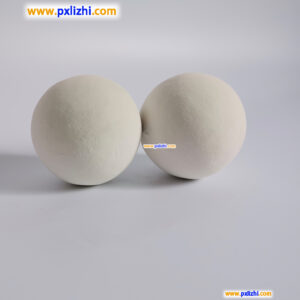
# Inert Ceramic Ball Applications in Industrial Processes
## Introduction to Inert Ceramic Balls
Inert ceramic balls are high-quality, chemically stable ceramic spheres used in various industrial applications. These balls are manufactured from premium materials like alumina, zirconia, or other ceramic compounds, offering excellent resistance to heat, corrosion, and chemical reactions.
## Key Properties of Inert Ceramic Balls
The effectiveness of inert ceramic balls in industrial processes stems from their unique characteristics:
– High thermal stability
– Excellent chemical inertness
– Superior mechanical strength
– Low water absorption
– Resistance to thermal shock
## Major Industrial Applications
### 1. Catalyst Support in Petrochemical Industry
Inert ceramic balls serve as excellent catalyst supports in petroleum refining and petrochemical processing. They provide:
– Uniform distribution of catalyst particles
– Protection against catalyst sintering
– Improved heat transfer
– Reduced pressure drop in reactors
Keyword: inert ceramic ball
### 2. Packing Material in Chemical Towers
These ceramic balls are widely used as tower packing in distillation, absorption, and stripping columns. Their benefits include:
– Increased surface area for mass transfer
– Enhanced gas-liquid contact
– Improved separation efficiency
– Resistance to corrosive environments
### 3. Grinding Media in Ball Mills
The high density and wear resistance make inert ceramic balls ideal for grinding applications:
– Consistent particle size reduction
– Minimal contamination of ground materials
– Long service life
– Energy-efficient operation
### 4. Heat Exchange Applications
In high-temperature processes, inert ceramic balls function as:
– Heat storage media
– Thermal shock-resistant components
– Efficient heat transfer media
– Support structures in regenerative heat exchangers
## Selection Criteria for Industrial Use
When choosing inert ceramic balls for specific applications, consider:
– Operating temperature range
– Chemical environment
– Mechanical stress requirements
– Size and density specifications
– Thermal conductivity needs
## Maintenance and Handling
Proper care ensures optimal performance and longevity:
– Regular inspection for cracks or wear
– Proper cleaning procedures
– Correct storage conditions
– Appropriate loading techniques
– Periodic replacement schedules
## Future Trends in Ceramic Ball Technology
The industry continues to evolve with:
– Development of nano-structured ceramic materials
– Improved manufacturing techniques
– Enhanced thermal and chemical properties
– Customized solutions for specific applications
– Environmentally friendly production methods
Inert ceramic balls remain indispensable components across multiple industries, offering reliable performance in demanding environments while contributing to process efficiency and product quality.